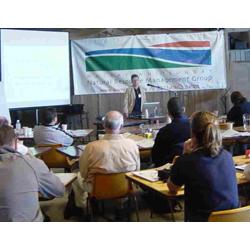Herbicide levels grow in Pioneer River Estuary
Published on 15 June, 2006
Dr Judith Wake, a Mackay-based member of CQU's Centre for Environmental Management, presented findings from an interim report, 'Re-sampling of Mangrove Health in the Pioneer Estuary 2005/06', at the Healthy Waterways Forum in Mackay on May 30.
 The report, funded by the Mackay Whitsunday Natural Resource Management Group and undertaken by Dr Wake, contributes to building a broader understanding of mangrove and ecosystem health in the Pioneer River Estuary.
The report, funded by the Mackay Whitsunday Natural Resource Management Group and undertaken by Dr Wake, contributes to building a broader understanding of mangrove and ecosystem health in the Pioneer River Estuary.
“This report shows that the levels of diuron are much higher than previously thought; however there is not a clear link between high levels of chemicals and mangrove health,\" Dr Wake said.
"High levels of herbicide in sediment did not result in any significant decline in mangrove health,” said Mr Will Higham, program manager with the Mackay Whitsunday Natural Resource Management Group.
“The Mackay Whitsunday Natural Resource Management Group is working with the cane industry to fine-tune management of fertilisers, chemicals and water. Input optimisation and management makes good business sense and is beneficial to the receiving environment ... the right way at the right time with the right machinery".
Canegrowers welcomes the report, according to its manager Scott Perkins.
"We are more than happy for the research to continue as it adds to the body of knowledge about our industry's impact on the environment.
"We are continuing to work with the NRM Group and other agencies to reduce the size of our environmental footprint through managing chemical and nutrient inputs".
Photo above: Dr Judith Wake presents the findings from re-sampling of mangrove health in the Pioneer Estuary at a Healthy Waterways Forum in Mackay on May 30.

